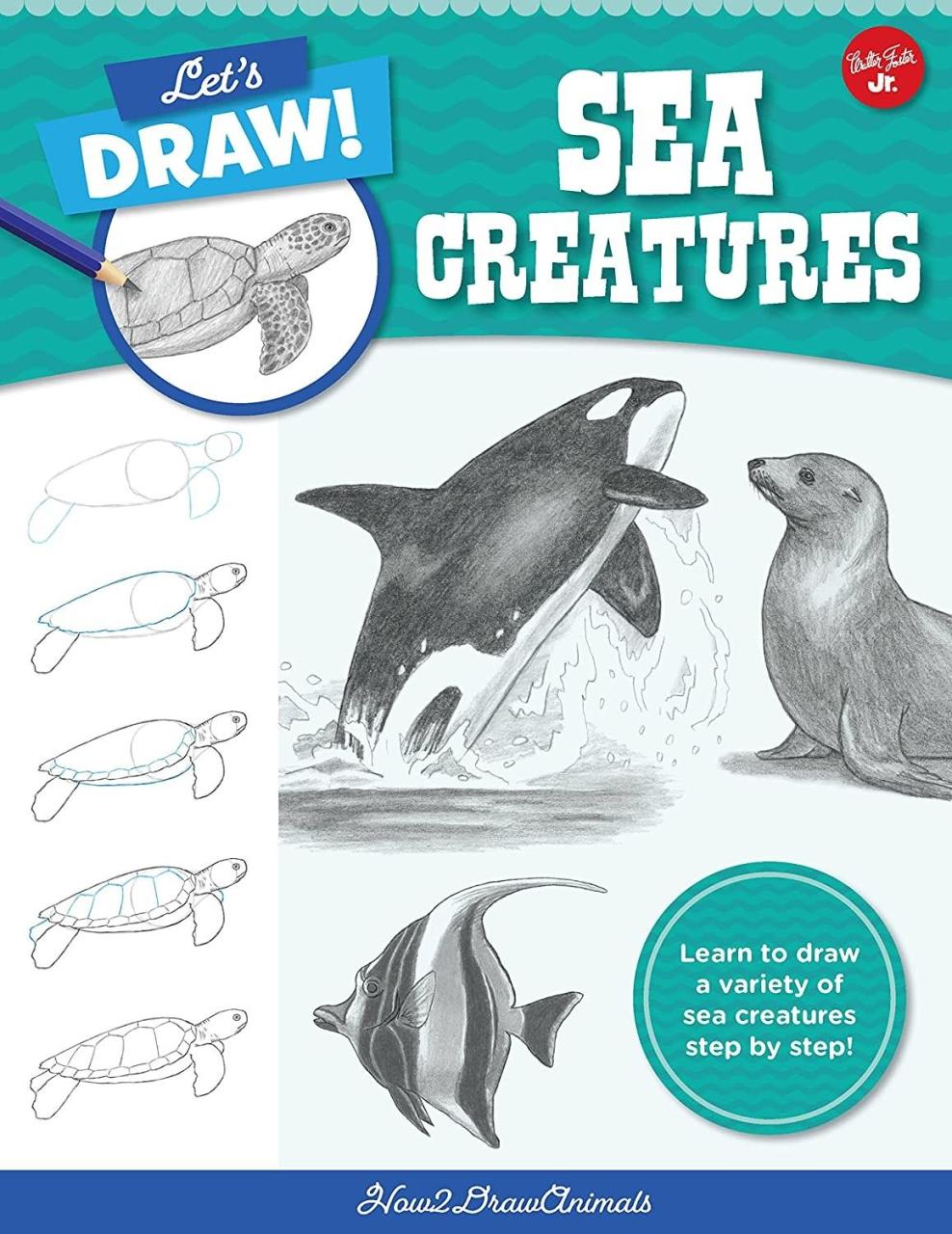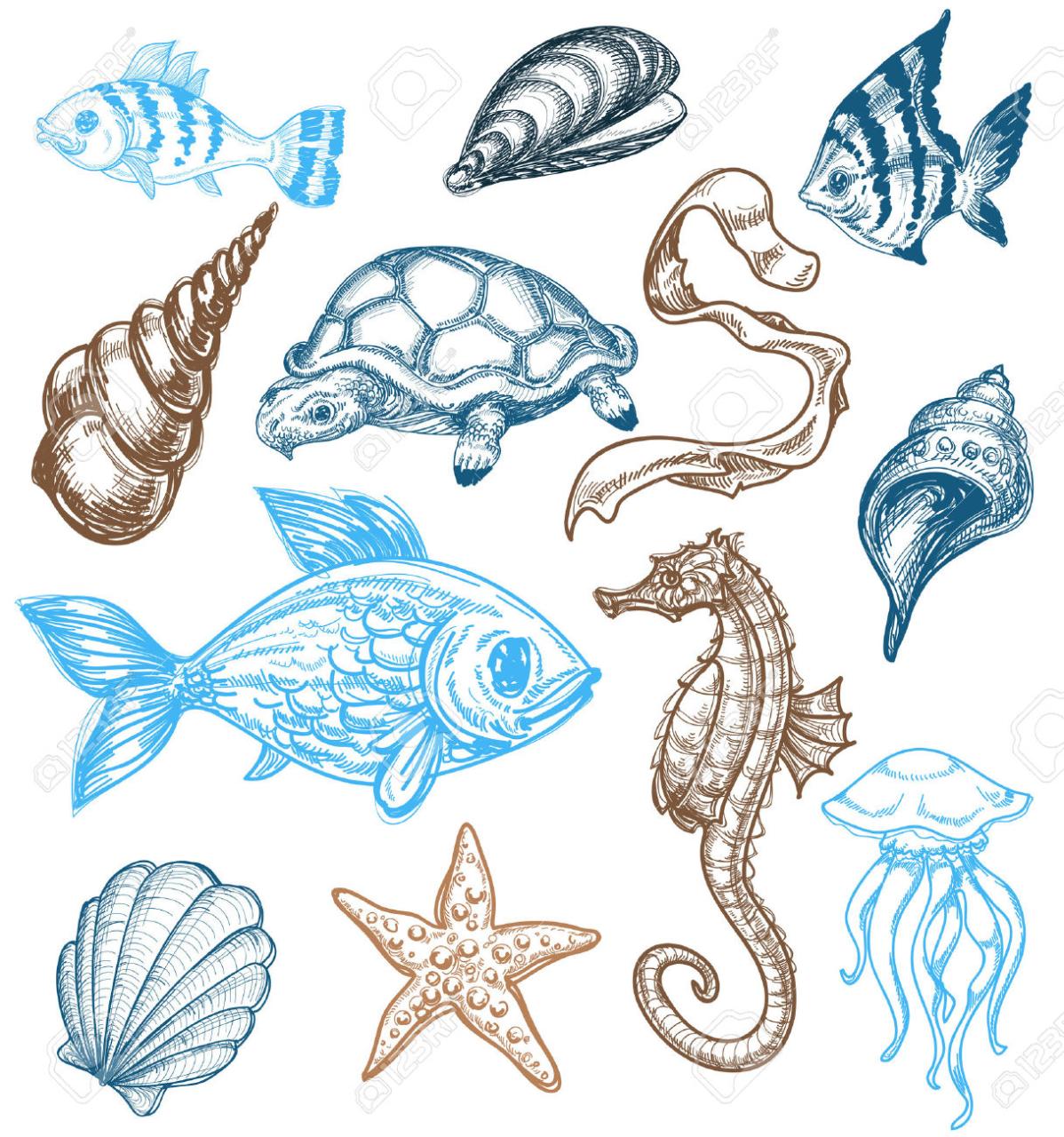In this auspicious occasion, we are delighted to delve into the intriguing topic related to Alright, young artist! Let’s dive into the exciting world of drawing sea creatures! 🌊🎨. Let’s weave interesting information and offer fresh perspectives to the readers.
Introduction
Alright, young artist! Let’s dive into the exciting world of drawing sea creatures! 🌊🎨

Before we get started, tell me, what kind of sea animals are you most excited to draw? Are you thinking of playful dolphins, majestic whales, or maybe even a grumpy octopus? Knowing your interests will help me tailor this lesson just for you!
Learning to Draw Sea Animals: A Journey of Creativity
Drawing sea animals is a fantastic way to explore the underwater world and unleash your imagination. It’s not just about making pictures, it’s about understanding shapes, learning to see details, and having fun with your creativity!
1. The Building Blocks of Sea Creatures: Shapes and Lines
Imagine you’re building a sandcastle. You start with simple shapes, right? The same goes for drawing!

- Basic Shapes: Think about the basic shapes that make up our sea friends. A dolphin is a bit like a curved triangle, a whale looks like a long oval, and an octopus has a round head and long, flexible arms.
- Lines: Lines are the magic ingredient that brings our shapes to life. We use curved lines to show the smooth body of a fish, zig-zag lines for the spiky shell of a sea urchin, and straight lines for the powerful tail of a shark.
2. Let’s Dive into Details: Adding the Features

Once we have our basic shapes, it’s time to add the details that make each sea animal unique!
- Eyes: Big, round eyes for a curious fish, small, beady eyes for a grumpy crab, or maybe even two sets of eyes for a sneaky squid!
- Mouths: A wide, open mouth for a hungry shark, a small, delicate mouth for a graceful seahorse, or a beak-like mouth for a playful dolphin.
- Fins and Tails: Fish have different types of fins – dorsal fins on their backs, pectoral fins on their sides, and tail fins for swimming. Whales have huge tails that they use to propel themselves through the water.
- Other Features: Don’t forget about the special features that make each sea animal stand out! Octopus tentacles, starfish arms, crab claws, and seahorse necks all add to the fun!

3. Putting it All Together: Creating a Sea Animal Scene
Now, let’s create a whole underwater world!
- Background: Start with a simple background. You can draw a blue ocean with waves, a sandy seabed, or even a coral reef teeming with life.
- Adding Depth: Use lighter colors for objects that are farther away and darker colors for those closer to you. This creates a sense of depth and makes your drawing look more realistic.
- Adding Life: Now, let’s fill our scene with our sea animal friends! You can draw a school of fish swimming together, a giant whale breaching the surface, or a playful octopus hiding in a coral cave.

4. Let’s Get Creative: Imagination is Your Limit!

Remember, drawing is all about having fun and expressing yourself. Don’t be afraid to experiment and let your imagination run wild!
- Color: Use bright, vibrant colors to bring your sea animals to life. Think about the colors of the real animals and use your imagination to create your own unique color combinations.
- Patterns: Many sea animals have beautiful patterns on their bodies. You can draw stripes, spots, scales, or even create your own unique patterns.
- Movement: Use lines and shapes to show movement. A wavy line can show a fish swimming, a curved line can show a whale breaching, and a series of circles can show an octopus crawling along the seabed.
The Benefits of Drawing Sea Animals: More Than Just Fun!
Drawing sea animals is more than just a fun activity. It helps you develop important skills and learn about the world around you!
- Creativity: Drawing encourages you to think outside the box and come up with new ideas. It’s a great way to express your imagination and have fun!
- Observation Skills: Drawing helps you pay attention to details and observe the world around you more closely. You’ll start to notice the different shapes, colors, and textures of sea animals.
- Hand-Eye Coordination: Drawing strengthens your hand-eye coordination, which is important for many other activities, like writing, playing sports, and even playing musical instruments.
- Problem-Solving: Drawing can be a great way to solve problems. If you’re struggling to draw a particular part of a sea animal, you can try different approaches until you find one that works.
- Learning About the Ocean: Drawing sea animals can help you learn about different species, their habitats, and their importance in the ocean ecosystem.
FAQs: Your Questions Answered!
Now, let’s address some common questions you might have about drawing sea animals.
1. What materials do I need?
You can start with simple materials like a pencil, eraser, and paper. As you get more comfortable, you can try different tools like colored pencils, crayons, markers, or even paints.
2. How do I make my drawings look realistic?
Practice is key! The more you draw, the better you’ll get at capturing the details and shapes of sea animals. You can also look at photos and videos of real sea animals for inspiration.
3. What if I’m not good at drawing?
Everyone starts somewhere! Don’t be afraid to make mistakes. The important thing is to have fun and keep practicing. Remember, even the best artists started out as beginners.
4. What are some fun things I can do with my drawings?
You can color them in, frame them, or even use them to create your own sea animal storybook! The possibilities are endless!
5. How can I learn more about drawing sea animals?
There are many resources available online and in libraries that can help you learn more about drawing sea animals. You can also look for drawing classes or workshops in your area.
Remember, drawing is a journey, not a destination. Have fun, be creative, and keep exploring the amazing world of sea animals! 🐠🐳🐙

Thus, we hope this article has provided valuable insights into Downloads Alright, young artist! Let’s dive into the exciting world of drawing sea creatures! 🌊🎨. We appreciate your attention to our article. See you in our next article!
 apapunada.my.id News Bisnis Technology Tutorial
apapunada.my.id News Bisnis Technology Tutorial